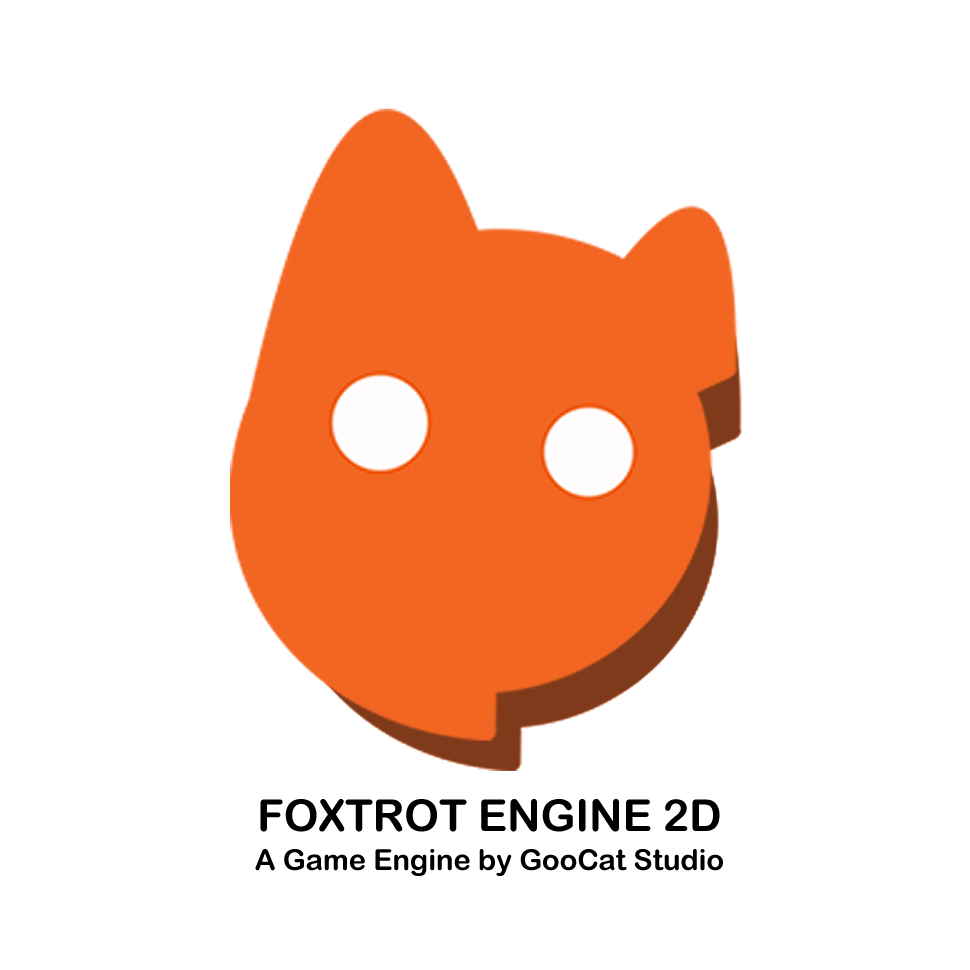Foxtrot 2D Engine Intro.
Foxtrot Engine 2D 
Foxtrot Engine 2D is a 2D game engine based on DirectX 11 for Windows. It includes Foxtrot Editor which allows users to create & modify scene data, and Foxtrot Engine which executes the produced game based on those data. Scene data are stored as a “.chunk” file, which is a file structure that describes the game data and the required resources.
Foxtrot Engine has been developed by JungBae Park from GooCat Studio for the game in development, “SPARED”.
List of Features
-
A component-based structure that allows to create custom Actors
-
Various Components to create behaviors for Actors
- Sprite renderer
- Tilemap renderer with .csv input
- Sprite animation
- Rigidbody simulation based on box2D
- 2D colliders in basic shapes (e.g. box colliders)
- User input Management & Moving characters
- etc. -
User-defined Components can be added as “Behavior”s
-
Create & Modify pre-defined Actors, “Premade”
(a similar concept to Unity Engine’s “Prefab”)
Plans and Goals
Foxtrot Engine has been developed not only as a portfolio but also as a tool of education to obtain game development experiences. The developer also expects to develop this project until it can produce a finished 2D game title. Here is the list of upcoming features and goals.
- Artificial intelligence for characters (current WIP)
- Spine animation renderer
- Particle system
- UI testing (this was implemented, but not tested)
- Establishment of the workflow of or the development routine.
- Finishing the prototype version of the game, “SPARED”.
References
- Gregory, J. Game Engine Architecture (Third Edition). A K Peters/CRC Press. ISBN-13: 978-1138035454.
- Jeong-Mo Hong. Introduction to Computer Graphics with DirectX 11 [Online Course]. HongLab. https://honglab.co.kr/collections/graphics
- Madhav, S. Game Programming in C++: Creating 3D Games (1st Edition). Addison-Wesley Professional. ISBN-13: 978-0134597201.
- Nystrom, R. Game Programming Patterns. Genever Benning. https://gameprogrammingpatterns.com/
- - Used as a primary reference for engine architecture design.
- - Implemented 2D renderer based on PART 2, Chapter 6: Rendering Pipeline.
- - Used code examples from PART 2. Realtime Pipeline; DirectX 11 utility functions to load and process textures.
- - Referenced for designing the game loop architectures.
- - Used component pattern for Actor architecture.
- - Used code examples on math; Vector classes with related functions.
- - Applied Command pattern for undo and redo system on Foxtrot Editor (Chapter: Command)


